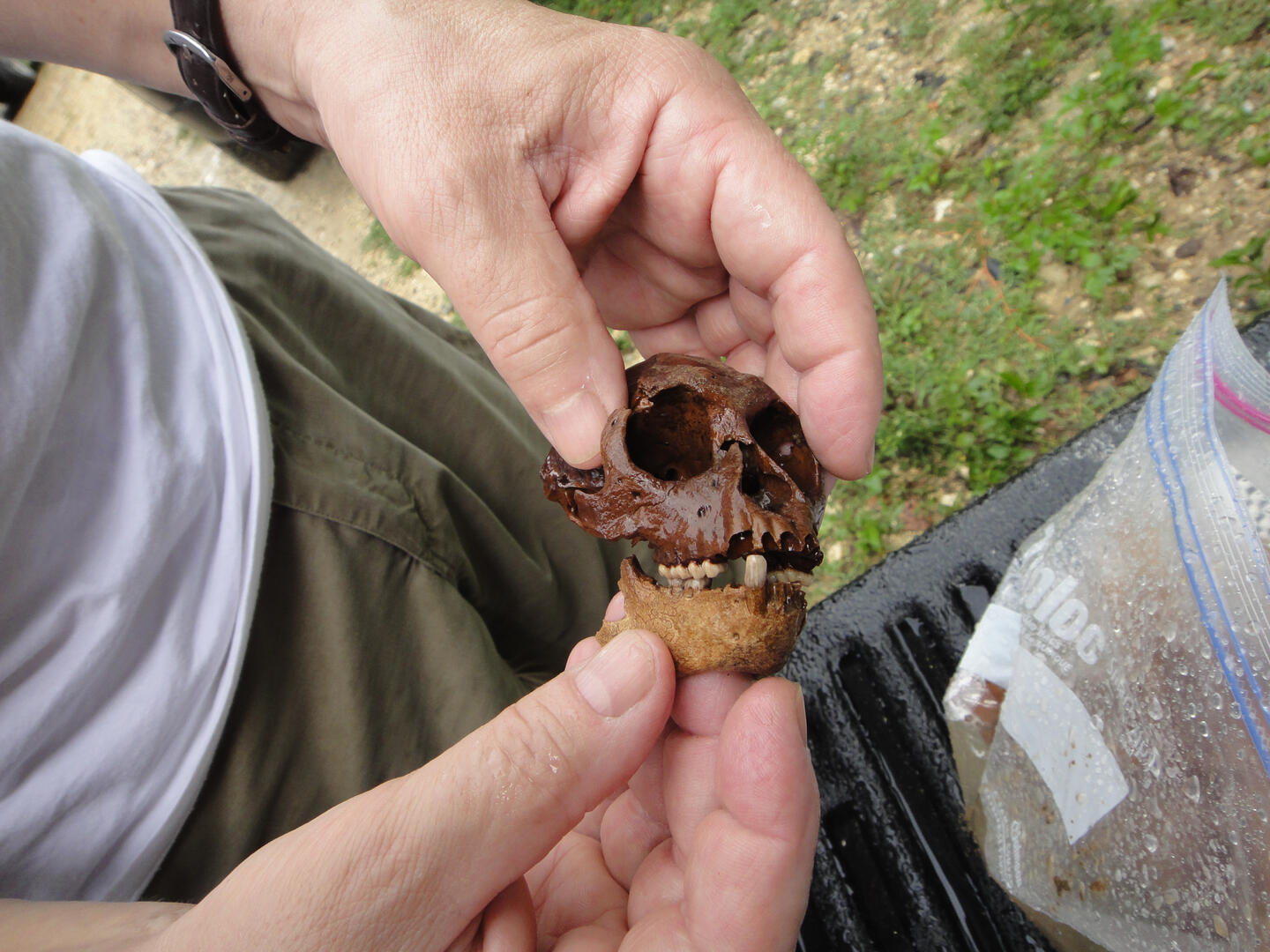
A research team including our own Dr Siobhan Cooke says their findings about the monkeys’ lives and deaths may inform efforts to conserve dwindling species.
Dr Siobhan Cooke has recently been making waves for her work in the Caribbean. As part of a team that identified the first skull of a juvenile Hispaniolan monkey from a flooded cave in the Dominican Republic, Dr Cooke has pursued a deeper understanding of the cranial anatomy of the Antillothrix. The greater aim of their research is to better understand and preserve the current mammalian diversity that can be seen in the Caribbean and elsewhere. Their collaboration with the National Museum of Natural History in Santo Domingo, Dominican Republic has led to three-dimensional models of the fossils and further research plans to examine the other Antillothrix bones. Please see the links below to check out Dr Cooke’s research for yourself!
Hopkins Medicine Newsroom: https://www.hopkinsmedicine.org/news/newsroom/news-releases/2024/10/study-of-monkey-fossils-found-in-cave-sheds-light-on-the-animals-extinction-centuries-ago
The Hub: https://hub.jhu.edu/2024/10/09/monkey-fossils-found-on-hispanola/
Sci Tech Daily: https://scitechdaily.com/10000-year-old-cave-fossils-reveal-secrets-of-mysterious-lost-caribbean-monkeys/
Earth.com: https://www.earth.com/news/fossils-reveal-the-lifestyle-of-an-extinct-caribbean-monkey/
